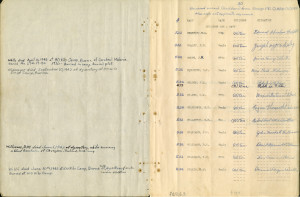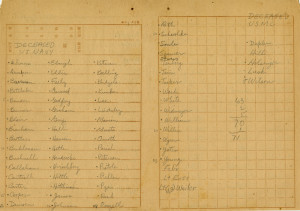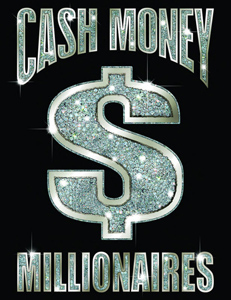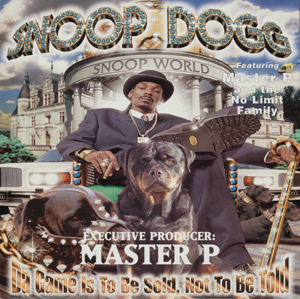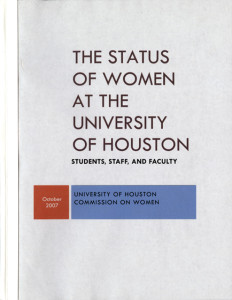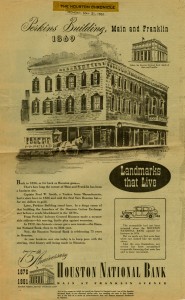
We have recently published an update to our Cruiser Houston Collection finding aid to include a series dedicated to the papers and artifacts of Lieutenant Preston R. Clark. Materials added to the collection include photographs, correspondence from World War II prisoner of war camps, and artifacts from the years spent in the camps.
Lieutenant Clark served on the USS Houston when it was sunk following a bravely defiant stand during the Battle of the Java Sea. Presumed lost in the aftermath, Lt. Clark and others survived hours of swimming to dry land only to be captured by the Japanese and interned in P.O.W. camps. Clark remained in captivity for nearly four years where he and others worked on the Thailand-Burma or “Death Railway” (a construction project immortalized in Pierre Boulle’s The Bridge over the River Kwai and the film of the same name).
While in captivity, Clark continued to fulfill his duties as Lieutenant, even maintaining a log of payments to the men under his command while facing extraordinary loss and circumstances beyond hyperbole. Anecdotally, survivors of the USS Houston and their loved ones speak highly of his leadership and service during those years of imprisonment. His meticulous records and attention to his duty no doubt helped to bring about balance to pay logs and some degree of normalcy to his men, but also brought a peace to the families and loved ones of those that were lost while held captive, by way of recording details regarding circumstances of death and final resting places for those unable to make it home.
Clark and many of his men were liberated as the war in the Pacific reached its end. The documents that came home with Clark, along with the wealth of additional primary sources included in these materials, are sure to provide researchers with fresh insight into the sacrifices offered up by so many. We encourage you to visit us here in Special Collections, tour the USS Houston exhibit located on the second floor of the M.D. Anderson Library, and survey these updated materials for yourself.
The growth of our Houston Hip Hop Collections continues with the recent publication of the Pen & Pixel Graphics, Inc. Records finding aid.
Bling!
Academics and “ballers” alike have heard the term and street cred is unnecessary to catch its meaning. It is what John Nova Lomax of the Houston Press described as a “false onomatopoeia… the sound a jewel or precious metal would make if it could be heard.” In 1992, as the twentieth century waned and the twenty-first century threatened to render the concept of “album art” obsolete, Shawn and Aaron Brauch founded Pen & Pixel Graphics, Inc. and went about helping to define the visual imagery that would become associated with so many hip hop artists from the Dirty South and beyond.
Bling-bling!
Labels like Rap-A-Lot, No Limit, and Cash Money Records came to rely on the Brauch brothers to create visually dense, hyper-stylized images of that “false onomatopoeia,” the monetary excess and conspicuous consumption contrasted against a reality of poverty, struggle, and reclamation. This imagery became the face of a new, emerging sound in hip hop. Given the pervasive influence of this visual style on an entire era of hip hop history, we are very excited to have this detailed finding aid now available to assist scholars in their research.
The Pen & Pixel Graphics, Inc. Records contain digital files, posters, t-shirts, and other promotional material for artists like Snoop Dogg, Geto Boys, DJ Screw, and others. Give the finding aid a look, indulge in the sampling recently published in our Digital Library, investigate some of our other collections, and come see us when you’re ready to take a closer look at some visual hip hop history.
We are pleased to share that the University Women’s Commission Records and University of Houston Women’s Resource Center Records have newly published finding aids in our Carey C. Shuart Women’s Archive and Research Collection.
As the University moved into the 21st century, President Arthur K. Smith appointed a commission of 24 UH-affiliated women to study the role of women in the University and address the issues and concerns of women on campus. In time, male voices were added to the Commission and the report emerging at the end of the study suggested a number of recommendations to guide the administration of the University since. One of the major recommendations, which came to fruition in 2004, was the establishment of the Women’s Resource Center.
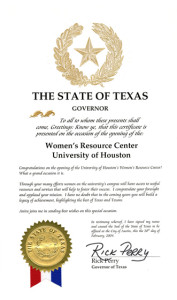
certificate from the Governor of Texas, commemorating the opening of the Women’s Resource Center at the University of Houston
The University Women’s Commission Records include the expected meeting minutes as well as documents establishing the organization, operational procedures, and priorities of the Commission. In addition, the records outline research and statistics, including surveys, assembled by the Commission, various reports of findings, including executive summaries, as well as materials documenting the establishment of a mentoring program.
The University of Houston Women’s Resource Center Records provide a glimpse of the Center’s young history of service to the UH community. Materials include correspondence as well as information related to programs and lectures presented by the Center. It will be an informative and telling pleasure to watch this collection grow over time, reflecting the Center and University’s development into the 21st century.
Take a “research break” from whatever you’re doing and give these new finding aids a look or, better yet, come see the collections for yourself.
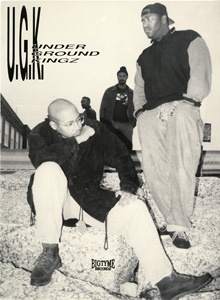
Underground Kingz (UGK), from the Houston Hip Hop Recording Artists Collection at the University of Houston Special Collections
The University of Houston Special Collections is pleased to announce that the finding aid for the Houston Hip Hop Recording Artists Collection has recently been published and is now available online. Incorporating a number of smaller collections donated by local rappers, DJs, businesses, and other members of the hip hop community, the Houston Hip Hop Recording Artists Collection contains promotional materials, photographs, and publications documenting the unique Houston hip hop scene from the 1990s through the present day.
Back in 1991 Chuck D was quoted as saying “Rap is CNN for black people,” expressing the frustrations of communities bewildered by the lack of attention or concern from the mainstream media. These untold stories would take root in freestyles, find themselves scribbled in notebooks, and performed on stages in front of audiences of different sizes and, eventually, different colors.
Music like hip hop, that establishes its presence organically outside of mainstream radio and record labels, is typically of interest in what it has to say not only in and of itself, but also what it has to say about the community from which it originates. Much in the same manner that scholars and researchers flocked to the study of jazz as a means of shedding light on the Great Migration of the early twentieth century, those interested in what CNN (and the others) missed along the way have turned to the study of hip hop. Unseen or unspoken in Chuck D’s quote is that hip hop became not only a national news network for otherwise uncovered topics, but it also became a local or micro news network, reflecting the specific anguish and joy of the individual communities which molded and shaped this genre to fit a particular need.
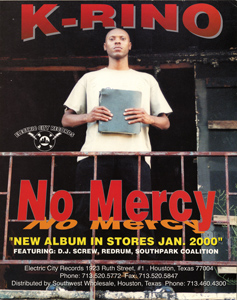
K-Rino, from the Houston Hip Hop Recording Artists Collection at the University of Houston Special Collections
While the hip hop scenes of the West and East Coasts have received most of the limelight (and now study), the hip hop scene of our Third Coast or Dirty South might find itself shortchanged. Our Houston Hip Hop collections help to fill that void, promising some exciting research potential. In looking at the Houston Hip Hop Recording Artists Collection, coupled alongside the DJ Screw Papers, researchers are able to gain an understanding of how and why this particular, regional scene evolved in the manner it has and the myriad of ways it differs from its brethren on either coast.
Please give the new finding aid a look and come visit us when you are ready to take advantage of these uniquely Houston resources.
The finding aid for the Houston National Bank Records (1889-1964) has recently been published as part of our Houston and Texas History collection area. The records for the Houston National Bank, founded in 1876, contain administrative files as well as scrapbooks from individuals associated with the bank.
The Houston National Bank was founded in 1876, moved into the bustling and growing downtown area in 1928, and remained a financial cornerstone in the city until it merged with the Tennessee Bank and Trust Company in 1964. Its former home, a beautiful neoclassical construction of limestone on a black granite base, sat vacant as the 20th century came to a close. University of Houston alumnus Hakeem Olajuwan purchased the property and it now breathes new life as the Islamic Da’wah Center.
The Houston National Bank Records consist primarily of correspondence, photographs, news clippings, and promotional material related to the 75th and 85th anniversary celebrations in 1951 and 1961 respectively. Personal papers and scrapbooks belonging to the likes of former bank president Melvin Rouff round out the collection.
Of course, we are excited about this new finding aid. Please give it look and, should you find something of import to your research, please visit us at your earliest convenience.
